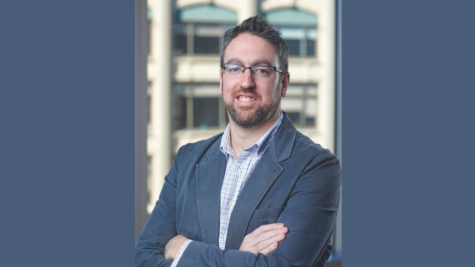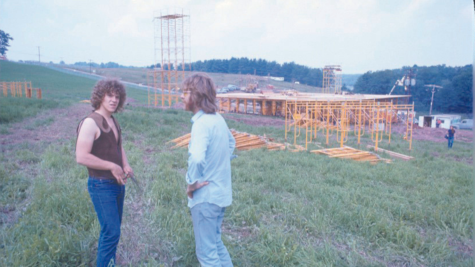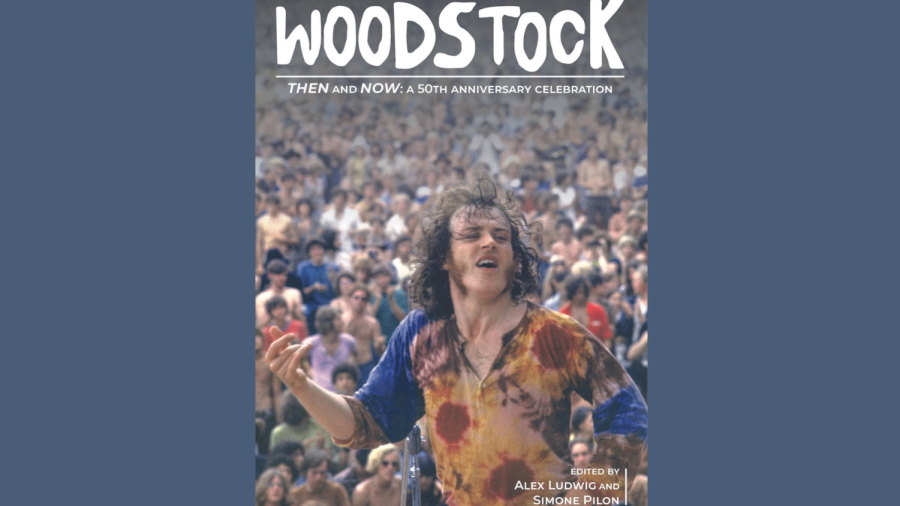Local Jewish author dives into Woodstock ‘then and now’
Published April 14, 2022
When Alex Ludwig was born in 1979, Woodstock was 10-year-old news.
Of course, people remembered the festival, a counter-cultural phenomenon that drew some 500,000 kids to Max Yasgur’s dairy farm for three days of peace, love and music.
And what music it was.
ADVERTISEMENT

Woodstock
Throughout the weekend, performances ran almost around the clock, showcasing a remarkably eclectic line-up. You heard everybody from British superstars The Who to a then-unknown guitarist called Carlos Santana; from the utterly individual Jimi Hendrix to the mutually resonant quartet of David Crosby, Stephen Stills, Graham Nash and Neil Young; from the witty retro style of ShaNaNa to the classic folk lyricism of Joan Baez.
Music was never the whole story, though. Peace and love — easy to mock as a hippie credo but hard to top as personal and social values — have always informed Woodstock, from its start to its still-enduring legacy.
But is that legacy . . . Jewish?
Ludwig, co-editor with Simone Pilone of “Woodstock Then and Now: A 50th Anniversary Celebration,” has come to believe that there’s more to that idea than meets the eye.
“Look at the people who organized Woodstock, which started with four young Jewish guys,” said Ludwig, assistant professor of liberal arts at the famed Berklee College of Music in Boston. “Look at the location, only about 100 miles from New York City. Look at the values.
“There’s a very Jewish feeling to it all.” In particular, he says, look at Michael Lang.

Woodstock: Michael Lang
Lang, who died in January of cancer, appeared happy and in good health when he joined many of his Woodstock colleagues at Berklee for a 2019 symposium detailing and celebrating the festival. It was the first time they had all been in one place since their days on Yasgur’s farm.
ADVERTISEMENT
“We wanted to get the stories down while we could,” said Ludwig. He organized the symposium with Pilone, a Berklee dean; the book grew out of their event.
Why an academic setting to examine an event that was indifferent, at best, to institutional stature?
“As a music historian, my job is to take music and situate it in its historical context,” Ludwig explained. “Culture shapes music and music shapes culture.
“Woodstock, which took place right at the end of the ’60s, holds the key in many ways to what was going on then.”
The locals were surprised by the youthful crowd that jammed the upstate roads, smoking grass and looking like the cast of “Hair.” Yet they seemed like nice kids, and there was very little trouble.
Ludwig attributes much of that success to Lang and his we-can-work-it-out vibe. He points to a photo of Lang that captures the Brooklyn boy, just 24 years old, sporting a curly “Jewfro” as he straddles a motorcycle in jeans and a leather vest. To Ludwig, it almost looks like a family snapshot. The black-and-white image that defines an era can seem oddly “haimish” to those who appreciate its milieu.
Woodstock: The author
Ludwig — who met his wife, Sandy, when they were both earning their doctorates at Brandeis University — grew up in Florissant, the son of retired educators and longtime United Hebrew Congregation members Mark and Carol Ludwig. Describing his parents and their friends as “hippie-adjacent,” Ludwig spent his youth immersed in all kinds of music.
There was classical music, of course. (Ludwig describes himself as “a cellist in a former life.”) There were the Broadway songs he played in all kinds of shows. And there were the rock sounds his family relished — the music that Michael Lang spent most of his life involved with as a promoter, producer, and artistic manager.
“Michael does these music festivals that are all financial disasters, but he picks himself up and keeps going,” Ludwig observed. “At Woodstock, he creates an open and inclusive space, set in rolling hills. “That’s welcoming, much more welcoming than some cold football stadium! And he brought on a security chief who was comfortable with the crowd. No one that I know of was arrested at Woodstock. There was no violence.
“The vibe kept everyone cool — and it emanated from Michael.”
Lang’s quartet of founders included his friend Artie Kornfeld, a songwriter who had a job keeping “the suits” at Columbia Records abreast of a rapidly evolving music scene; Polident heir John P. Roberts; and lawyer Joel Rosenman. Roberts and Rosenman, friends of each other, were young entrepreneurs looking to succeed in a business they might actually enjoy. In 1969, all four were in their 20s.
Woodstock: The Jews
And they were all Jewish. So was official Woodstock photographer Elliott Landy, long famed for his seminal photos of classic ’60s rock. So was Rona Elliot, the music journalist who handled Woodstock public relations. (Elliot’s canny, distinctive voice rings through the book, a highlight on page after page.) So, for that matter, was Max Yasgur.
“Yasgur was conservative politically,” Ludwig says. “But he wanted to help these kids, who were willing to think big and roll with the punches.”
One of the biggest punches came when size of the crowd — 10 times bigger than anyone expected — turned tickets into a joke. Lang made a quick decision: He declared the festival free. Come one, come all.
Ludwig would never claim that Woodstock was a Jewish event. At the time, no one described it as Jewish at all. But he does detect a Jewish vibe that thrummed from the top on down.
Are people hungry? Then you get more food and hand out sandwiches. After all, at Passover don’t we step into the street to summon strangers to our table, or (more realistically) invite people we suspect have no seder to attend?
Do you need to enlarge relief stations? Then you redesign the sewage system and start digging. After all, didn’t Moses and Aaron organize the logistics of the Exodus in a hurry? “Michael knew how to pivot,” Ludwig observes.
Is one of your performers on a “bad trip”? Then you sit and speak with him quietly for as long as it takes. That’s what Lang did. After all, don’t we recline at the seder? You want make people feel comfortable. Woodstock was all about “the idea of community,” Ludwig said. “It was a very open, very welcoming environment.” That feels somehow familiar to Ludwig. He’s bringing his wife and their son back here in time for the seder.















